#chenopodium
Explore tagged Tumblr posts
Photo



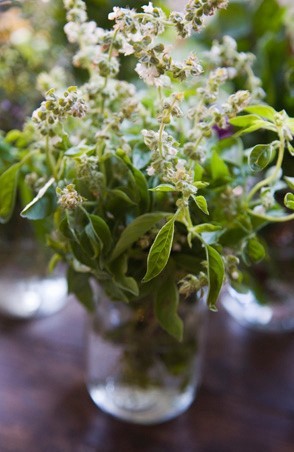
Foraged Wild Greens, Purslane and Lamb's Quarters
191 notes
·
View notes
Text

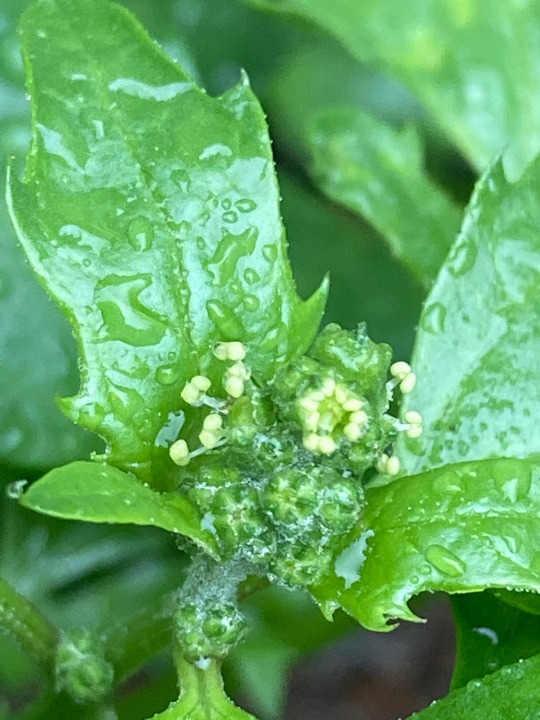
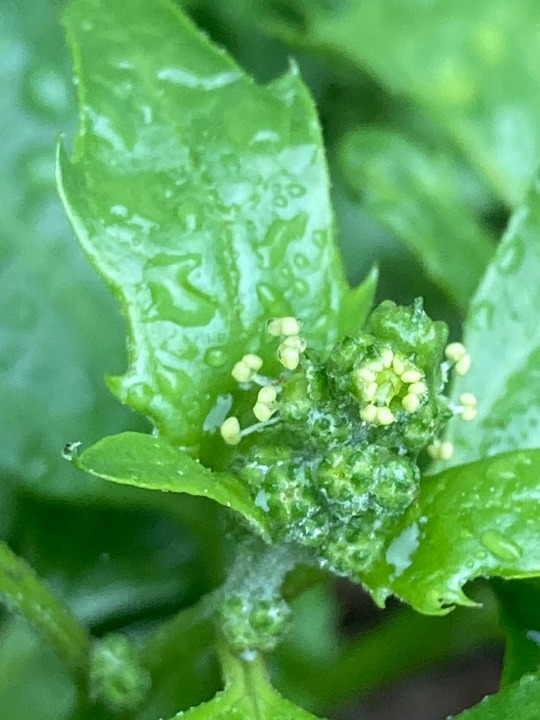
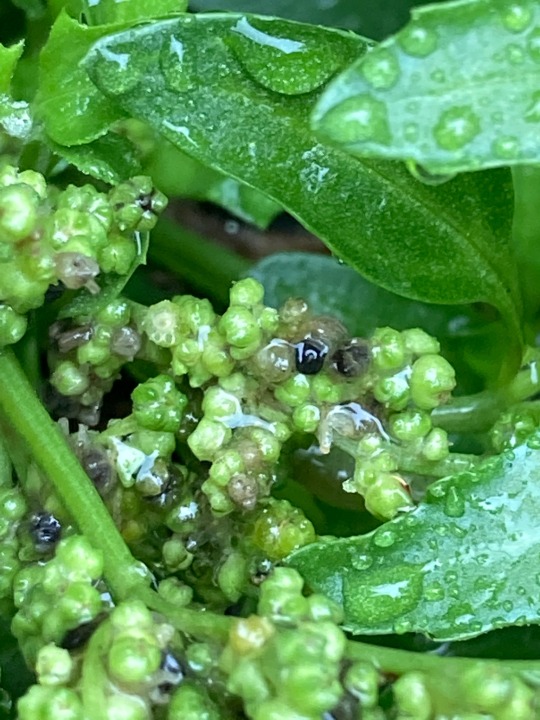
2 notes
·
View notes
Text
i just start tearing up when i see my mom bringing home random seasonal leafy vertables.
and currently shes infodumping about how good these plants are. and that they do not require more fertilizers or water. grow in even rocky terrain, no need to expensive machinary for ploughing etc.
and im just beaming with pride 😭😭😭😭😭 shes so cool man.
#dont talk to me if you dont like saag#on this blog we stan saag#je pense#and by saag i dont just mean spinach#fenugreek#amaranthus#chenopodium etx#also includes chakwad#karenua#lahsua#and this othe rplant with a sloght citrus flavour that im forgetting the name#and ofc these are all local “weeds” so most of you wont know them#do tell me your local seasonal vegetables#ecology
15 notes
·
View notes
Link
1 note
·
View note
Text
#Chenopodium Quinoa Seeds Market Size#Chenopodium Quinoa Seeds Market Share#Chenopodium Quinoa Seeds Market Growth#Chenopodium Quinoa Seeds Market Trends#Chenopodium Quinoa Seeds Market Forecast Analysis#Chenopodium Quinoa Seeds Market Segmentation#Chenopodium Quinoa Seeds Market 2024#Chenopodium Quinoa Seeds Market CAGR#Chenopodium Quinoa Seeds Market Analyzer Industry
0 notes
Text

#Chenopodium Quinoa Seeds Market#Chenopodium Quinoa Seeds Size#Chenopodium Quinoa Seeds Growth#Chenopodium Quinoa Seeds Trend#Chenopodium Quinoa Seeds segment#Chenopodium Quinoa Seeds Opportunity#Chenopodium Quinoa Seeds Analysis 2024#Chenopodium Quinoa Seeds Forecast
0 notes
Quote
Chenopodium Quinoa Seeds Market
Chenopodium Quinoa Seeds Market- Global Demand & Industry Analysis | IMR
0 notes
Text

Filtering water used to clean edible goosefoot/lambsquarters seeds to save the toxic saponins for wool washing time
#yeen yelling#this isnt fully conprehensible yet so no main crafts blog yall get to see the chaos instead#exact species is chenopodium album
1 note
·
View note
Quote
Quinoa seeds are belonging to the Chenopodium (Goosefoot) family, and they are grown on alkaline soil, in cooler climates throughout the year, and with less water. Quinoa is a grain that originated in Andean countries such as Peru, Bolivia, and Ecuador, where it is still a staple meal. Quinoa is a climate-resilient food grain crop that has grown in popularity in recent years as a result of its nutritional content, phytochemical qualities, and health advantages.
Chenopodium Quinoa Seeds Market- Global Demand & Industry Analysis | IMR
0 notes
Text
Hmm:

Regarding tenzu tablets:
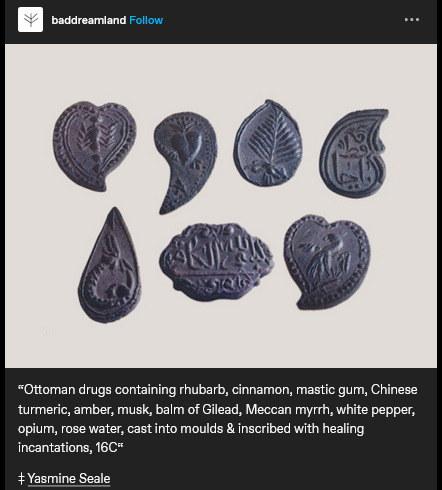
Caption reads: "Ottoman drugs containing rhubarb, cinnamon, mastic gum, Chinese tumeric, amber, musk, balm of Gilead, Meccan myrrh, white pepper, opium, rose water, cast into moulds & inscribed with healing incantations, 16C". Credited with a link to Yasmine Seale, on social media.
Original linked source doesn't mention where these particular tablets/molds were created, kept, displayed, etc. But I wanted to learn more and found a kinda recent summary of tenzu which was published by Nil Sarı (head of History of Medicine and Ethics Department at Istanbul University's Cerrahpasha medical school, president of Health History and Museology Association), which was presented at a conference in 2016:
Nil Sarı. "The Special Pharmaceutical Tablet “Tenzu” in Ottoman Medicine.” 7th International Congress for History of Islamic Medicine, October 24-28, Fez, Morocco, 2016: 24-28.
An excerpt of the text:
In Ottoman Turkish tenzu (tensuh) means "very rare beautiful thing" or "a box containing a variety of fragrances." Tenzu was also said to be the name of a place in Hitay (Eastern Turkistan / Xinjiang) where a medicinal clay - the main ingredient of the tablet tenzu - was imported from. Tenzu was a kind of theriac said to be effective against various ailments. Different tenzu prescriptions are noted in the texts [...] of several medical manuscripts of the 17th and 18th centuries. These tenzu prescriptions were described by various physicians, e.g. the head physicians Salih bin Nasrullah and Nuh Efendi as well as Hayatizade Mustafa Feyzi and Shaban Shifai who were palace physicians of the period. The special pharmaceutical tablet/pastille named "tenzu kursu" was formed in various shapes, i.e. oval, round, or rectangular. A measured amount of the drug preparation was compressed and shaped in a special brass mold named "tenzu kalibi" in Turkish. [...]
Prayers and ornamentations are engraved on the metal molds [...]. The expressions Deva al kulub (Drug for the heart) and Shifa al marghoob (The desired, yearned healing) inscribed on molds reinforce spirituality. [...] Inscriptions around the center of the other flower shaped pattern are Ferd, Hayy, Kayyum and feehi shifaun lin-naas (wherein is healing for mankind, Surah an-Nahl, verse 69). [...] Al-Hayy and Al-Qayyum are often used together. Al-Hayy signifies "ever-lasting life", and Al-Qayyum "self-existing life". [...] Sihhat bad (Have a good health) and Afiyet bad (Have a good appetite) are inscribed. [...] A. Suheyl Unver and Hayri Sozen published several tenzu prescriptions in their book "Turk Farmakaloji Tarihi I.", in 1960. [...] Tenzu prescriptions are found in several medical manuscripts kept in the Topkapi Palace Library, Suleymaniye Library and Istanbul University Rare Books Library.
Clay is a main ingredient [...]. Tiyn-i Tenzu is an unknown red colored clay. However, Terra Sigillata (Tiyn-i mahtum / muhurlu toprak) and Armenian Clay (Kil ermeni) are found in the prescriptions. [...] There are also animal products in the compositions, i.e. ambergris (amber), bezoar (badzehr), kermes (kirmiz), musk (misk), raw silk (harir-i ham / ham ipek), [...] and burnt deer antler (yanmisgeyik boynuzu). There are a wide variety of herbal drugs in the compositions, i.e. Acorus calamus [...], Aloe vera (Sabir), [...] Anchusa offinalis (Lisan-i sevr cicegi), Artemisia absinthium [...], Bambusa arundinaceae [...], Chenopodium album [...], Cinnamon (Darcin), Citrus aurantium [...], Crocus sativus (Za'feran), Embellia ribes [...], Gummi mastix [...], Heliotropium arborsecens [...], Nardustachys jatamansi [...], Potentilla reptans [...], Pterocarpus santalinus [...], Red rose/Rosa gallica [...], Rheum officinale (Ravend), Rumez acetosellaseed [...], Ruta graveolens (Keci Sadefi/Sedef Otu), Terminalia citrina [...], Terminalia chebula [...], Tormentilla (Tormentila).
Shaping and storage of these drugs are explained alongside some of the tenzu prescriptions. According to a recipe, all ingredients are beaten very thin on a porphyry (onyx marble) [...]. Each dose wrapped in gold foil is anointed an amount of almond oil. It is pressed into the mold, dried in the shade and stored in wood boxes. [...] Drugs in tablet form was an old tradition. In general, the preparation is poured onto a tray. [...] After dried in the shade, orange leaves are put between them. Stored in colored glass containers, they're reused when needed, squashed with water and drunk as a syrup. Also, flat pills made of a drachma weight were retained on the tongue in the mouth [...]. Although drugs in tablet form were used throughout Ottoman history either as a pastille or to be converted into syrup, the tenzu tablet molds were designed for the Ottoman sultans and members of the dynasty to make special tablets decorated with calligraphy [...].
[End of excerpt.]
All of these images are cropped screenshots of the PDF scan of the printed "conference works"; the PDF was uploaded online by Nil Sarı.


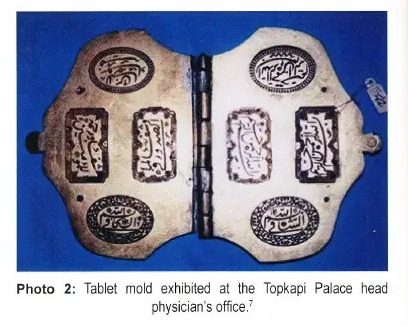

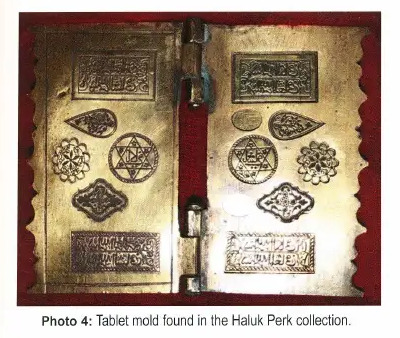
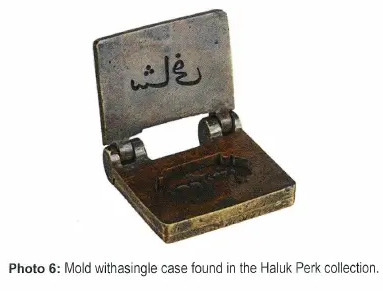
#sorry some of the non english is messed up because i had to transcribe the text myself from the image scans#also like that the Special Sweets Kitchen of the palace produced medicine
138 notes
·
View notes
Text
Plants for The Buried
Crab grass (Digitaria)
Wood sorrel (Oxalis)
Peppermint (Mentha × piperita)
Chickweed (Stellaria media)
Dandelion (Taraxacum officinale)
Canada Thistle (Cirsium arvense)
Bindweed (Convolvulus arvensis)
White Clover (Trifolium repens)
Nutsedge (Cyperus rotundus)
Japanese knotweed (Reynoutria japonica)
Lambsquarters (Chenopodium album)
Quackgrass (Elymus repens)
Curly dock (Rumex crispus)
Purslane (Portulaca oleracea)
Creeping charlie/Ground-ivy (Glechoma hederacea)
Broadleaf plantain (Plantago major)
Dove weed (Croton setiger)
Black medic (Medicago lupulina)
Spear thistle (Cirsium vulgar)
Ragweed (Ambrosia artemisiifolia)
Asiatic dayflower (Commelina communi)
Poison Sumac (Toxicodendron vernix)
Stinging Nettle (Urtica dioica)
Wild Madder (Galium mollugo)
#og.txt#popculture magic#paganism#pop culture paganism#tma paganism#tma pcp#the magnus archives#tma#the buried#the forever deep below
17 notes
·
View notes
Text


1 note
·
View note
Text
Karelian words - Grains And Cereal
Elo, vil'l'a - grain
Kagra - oat (Avena sativa)
Kastari, vehnä - rye brome (Bromus secalinus)
Kinoa, hanhenelo - quinoa (Chenopodium quinoa)
Krečču - buckwheat (Fagopyrum esculentum)
Kukkaruuzu - maize (Zea mays)
Nižu - wheat (Triticum aestivum)
Ozra - barley (Hordeum vulgare)
Prossa, šona - common millet (Panicum miliaceum)
Revonelo - amaranth (Amaranthus, esp A.palmeri and A.caudatus )
Riissu - rice (Oryza sativa)
Ruis - rye (Secale cereale)
Sorgo - sorghum (esp. S.bicolour)
Speltanižu - spelt (Triticum spelta)
26 notes
·
View notes
Photo

These are only four of over 10,000 corn kernels that filled a dense layer of plant remains in a feature discovered during 2012 excavations at a late precontact Oneota site in Onalaska, Wisconsin. Some kernels were smaller, like the one on the bottom left, while others were larger and more crescent-shaped, like the one on the bottom right. The kernels shown here are within a 1-cm scale. While corn kernels were abundant, only 19 corncob (cupule) fragments were found in the concentration of plant remains. This suggests that the corn had been “cleaned,” with the kernels removed from the cob, before storing. The thatch-lined pit served as a storage space for much smaller amounts of beans and Chenopodium (goosefoot or lambsquarters) as well.
51 notes
·
View notes
Link
1 note
·
View note
